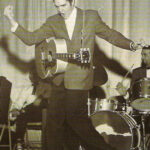The F# minor guitar chord (F#m) is a staple for many guitarists, yet it’s often a stumbling block, especially for those just starting their guitar journey. If you’ve found yourself searching for easier ways to play the F#m chord, you’re not alone! It’s one of the most frequently looked-up chords, primarily because the most common method involves a barre – a technique where one finger presses down multiple strings at once.
Barre chords require finger strength and dexterity that develop with practice. But don’t worry, there are several approaches to playing the F#m guitar chord, including some that eliminate the barre entirely.
Let’s explore three effective ways to play the F#m chord, progressing from the standard barre version to simpler alternatives.
The Standard F#m Barre Chord
This is the classic way to play the F#m chord and is an essential technique to learn as you advance. However, if you are new to guitar, it can be quite challenging at first. If you’re finding it too difficult right now, feel free to skip ahead to the easier versions below and return to this one later.
Ready to tackle the standard F#m? Here’s how it’s played:
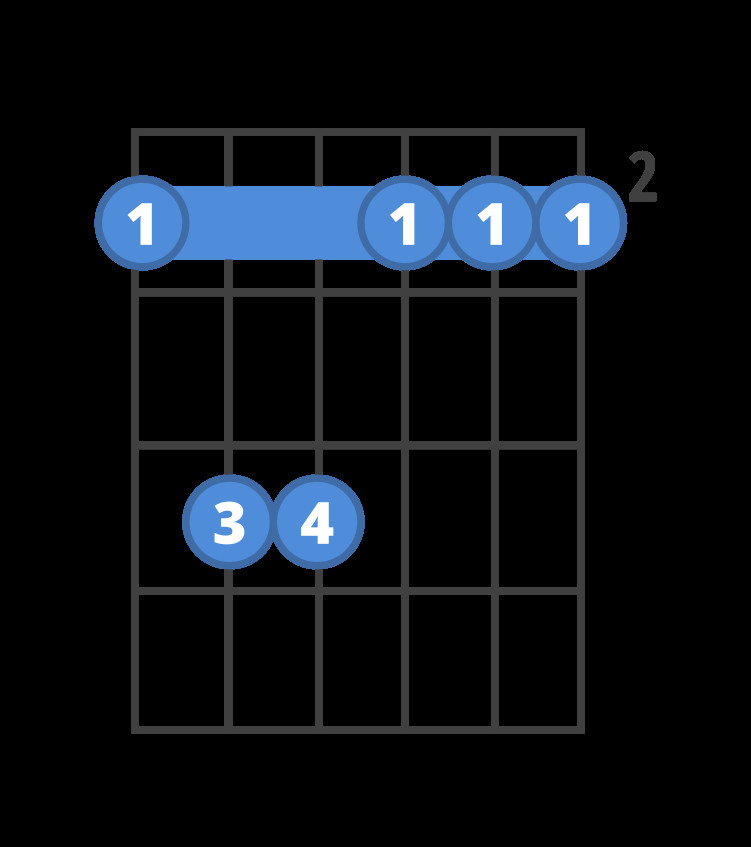 F#m guitar chord diagram standard barre version.
F#m guitar chord diagram standard barre version.
Understanding Chord Diagrams: If you’re new to chord diagrams, they visually represent the guitar fretboard. The horizontal lines are frets, and the vertical lines are strings. The numbers indicate which finger to use, and ‘x’ means don’t play that string, while ‘o’ means play open string. Learn more about how to read chord diagrams.
- Index Finger Barre: Place your index finger across all six strings at the 2nd fret. Ensure you’re pressing down firmly just behind the fret to get a clear sound from all strings.
- Ring Finger: Place your ring finger on the 5th string (A string), 4th fret.
- Pinky Finger: Place your pinky finger on the 4th string (D string), 4th fret.
- Strum: Strum all six strings from the low E string to the high E string.
The barre is the key challenge here. It requires consistent pressure across all strings to avoid buzzing. Practice applying even pressure with your index finger and ensure your knuckles are slightly bent to maximize strength.
If this feels too strenuous, don’t get discouraged! Let’s move on to a slightly easier barre version.
The Mini-Barre F#m Chord
One way to make barre chords less demanding is to reduce the number of strings you barre. This “mini-barre” version of the F#m chord only requires barring three strings, making it significantly easier to manage.
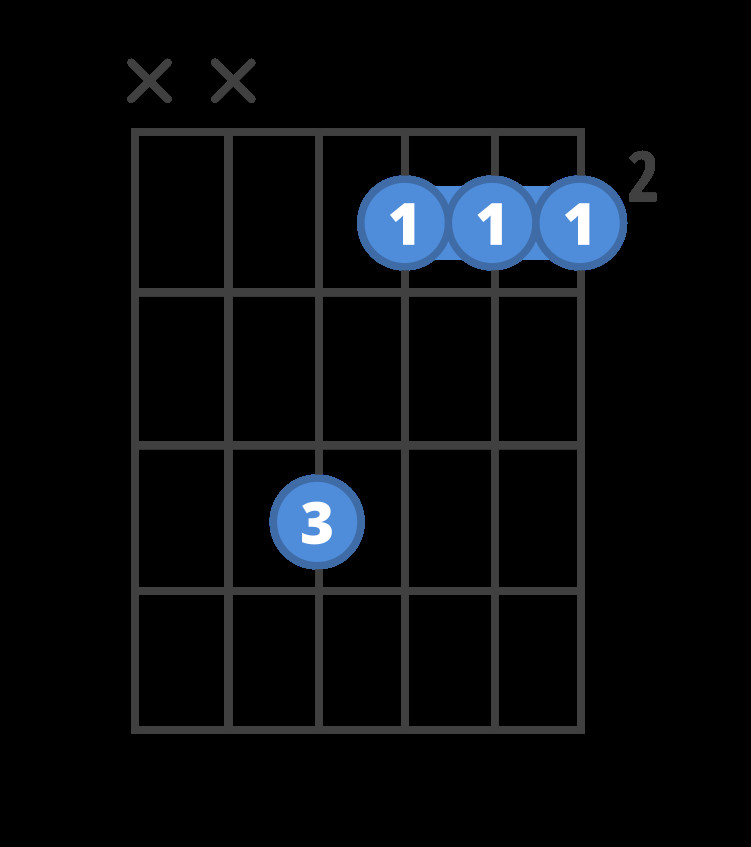 F#m guitar chord diagram mini barre version.
F#m guitar chord diagram mini barre version.
- Index Finger Mini-Barre: Position your index finger to barre across the 1st (high E), 2nd (B), and 3rd (G) strings at the 2nd fret. Focus your pressure on these three strings.
- Ring Finger: Place your ring finger on the 4th string (D string), 4th fret.
- Strum: Strum only the thinnest four strings – from the D string down to the high E string. Avoid strumming the lower E and A strings.
This version is easier on your index finger and is a great stepping stone towards mastering full barre chords. You get the essence of the F#m sound while building barre strength.
The No-Barre F#m Chord (Easiest Version)
For absolute beginners or when you need a quick and simple F#m, this no-barre version is ideal. It only uses the top three strings and doesn’t require a barre at all!
- Index Finger: Place your index finger on the 3rd string (G string), 2nd fret.
- Middle Finger: Place your middle finger on the 2nd string (B string), 2nd fret.
- Ring Finger: Place your ring finger on the 1st string (high E string), 2nd fret.
- Strum: Strum only the thinnest three strings – the G, B, and high E strings. Crucially, avoid strumming the thicker strings (E, A, and D strings).
This version is the easiest way to play an F#m chord and is perfect for practicing finger placement and transitions. While it’s not a full-bodied F#m, it provides a recognizable and useful voicing of the chord, especially in simpler song arrangements.
Enhance Your Barre Chord Skills
 Barre chords lesson image.
Barre chords lesson image.
Barre chords might seem daunting initially, but they are fundamental to expanding your guitar vocabulary. To help you conquer barre chords, we have a fantastic video series by Anna Freitas that demystifies the technique.
This lesson series provides essential tips for playing barre chords cleanly, moving them across the fretboard, and transitioning between barre chords smoothly. It also addresses common issues like fret buzz and helps you develop the necessary finger strength and technique.
Practice F#m Effectively
To truly learn the F#m chord, consistent practice is key. Muscle memory is developed through repetition, so regular practice sessions, even short ones, are more effective than infrequent long sessions.
For targeted F#m practice, ChordBank offers interactive drills and games designed to make learning chords fun and engaging.
Note: These links are designed to open directly in the ChordBank app on your iPhone or iPad for an interactive learning experience.
Make Practice Fun with Games
Games are a fantastic way to make chord practice enjoyable and keep you motivated.
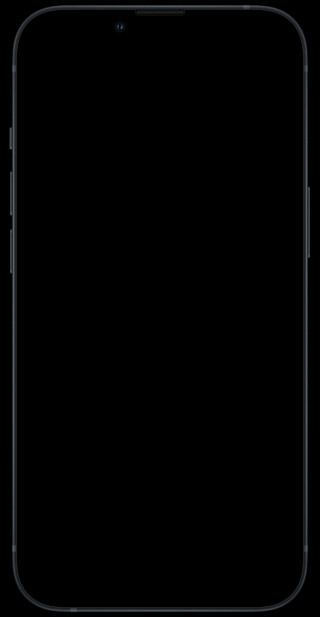 iPhone game image 1.
iPhone game image 1.
 iPhone game image 1.
iPhone game image 1.
Try ChordPOP! or Blackjack within the ChordBank app. These games listen to your guitar playing through your device’s microphone and respond dynamically as you play the correct chords. This interactive feedback helps solidify your chord changes and makes practice feel less like a chore.
ChordPOP!: F#m Practice Game »
Blackjack: F#m, A, D, and E Chord Game »
Smart Flashcards for Chord Transitions
 iPhone game image 1.
iPhone game image 1.
Smooth transitions between chords are crucial for playing songs fluidly. Flashcards are an excellent tool for practicing chord changes and building speed and accuracy.
Practice Common Chord Pairings: F#m and A
Practicing chord changes between commonly paired chords accelerates your learning. The F#m and A major chord progression is frequently used in songs, making it a valuable combination to master.
F#m
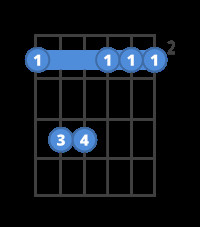 F#m guitar chord diagram for flashcards.
F#m guitar chord diagram for flashcards.
A
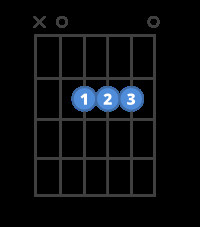 A major guitar chord diagram for flashcards.
A major guitar chord diagram for flashcards.
Practice F#m and A Chord Changes »
Expanding Your Chord Vocabulary: F#m, A, D, and E
Once you’re comfortable with F#m and A, expand your practice to include the D major and E major chords. This four-chord progression (F#m, A, D, E) is incredibly common and will unlock a vast number of songs for you to play.
F#m
 F#m guitar chord diagram for flashcards.
F#m guitar chord diagram for flashcards.
A
 A major guitar chord diagram for flashcards.
A major guitar chord diagram for flashcards.
D
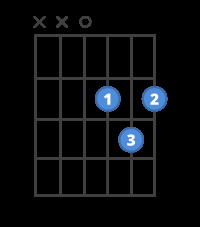 D major guitar chord diagram for flashcards extended.
D major guitar chord diagram for flashcards extended.
E
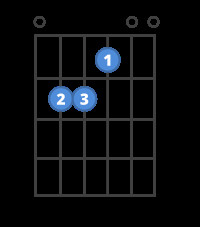 E major guitar chord diagram for flashcards extended.
E major guitar chord diagram for flashcards extended.
Practice F#m, A, D, and E Chord Changes »
By exploring these three versions of the F#m guitar chord and utilizing effective practice techniques, you’ll be playing this essential minor chord with confidence in no time! Remember to start with the version that feels most comfortable and gradually progress to the full barre chord as your finger strength and technique improve.


